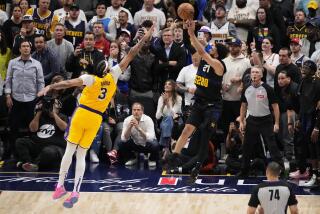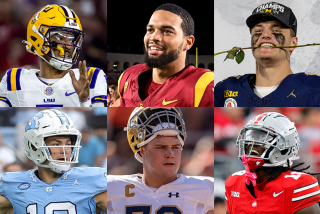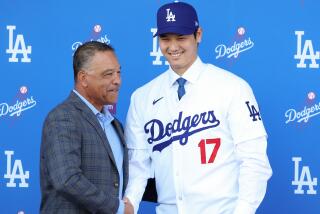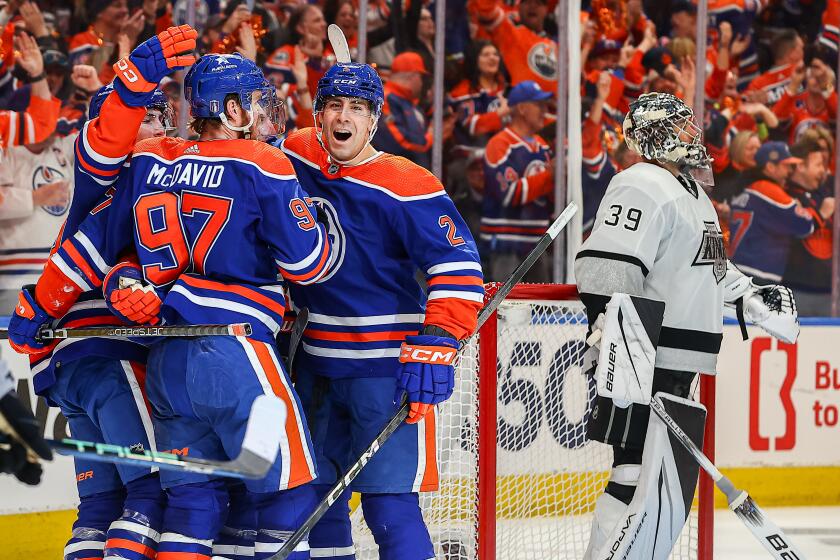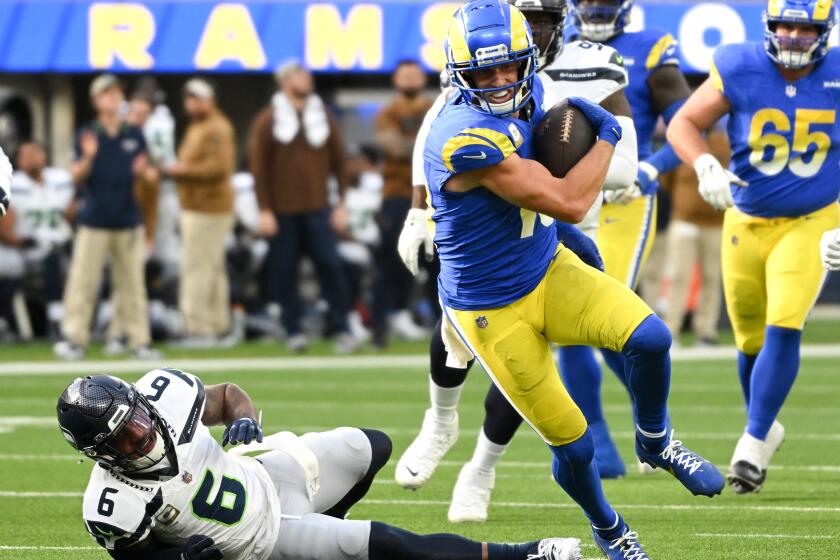Not your usual athletes’ endeavor
If they weren’t who they are I’d doubt they could do it, and I’d roll my eyes when I heard quotes such as, “It’s going to change what people strive for when they become pro athletes. It’ll change how people think about pro athletes.”
At first, Athletes for Hope seemed to be another one of those concepts that sounded nice but probably wouldn’t succeed. Its mission is to help athletes make better contributions to their communities and to match corporations and volunteers with civic-minded athletes. Sure. OK. Good luck with that.
Then I saw the people involved. Names such as Andre Agassi, Andrea Jaeger and Warrick Dunn.
They don’t just talk, they make things happen. Ask any of the students at the Andre Agassi College Preparatory Academy in Las Vegas. Or the children with cancer who have skied, rafted or ridden horses at Jaeger’s Little Star Foundation. Or the 67 single mothers who have new homes thanks to Dunn.
When Agassi (who uttered the quote in the first paragraph) talks about Athletes for Hope he starts to get emotional, as if this matters as much as winning Wimbledon.
“It’s about redefining what we strive for,” Agassi said. “It’s about connecting people with the reality that if they step up to take action, good things will happen. This is an education for everybody.
“This is a full-on assault. For us, we’re looking at this as global. This is something that will carry on well across culture barriers.”
Charity seems simple, doesn’t it? Write some checks, give some time, feel better. You’d be amazed at how often people with the right intentions get it wrong. A recent Wall Street Journal examination of 85 athletes’ charitable foundations revealed that only 35 of them spent more than 75% of their money on charitable programs. That falls in with what Agassi used to see himself, when he would attend fund-raising events and grant the use of his name, only to discover that the majority of the money went to administrative costs.
“Somebody got a good reputation out of it, but you’re questioning how much change really happened,” Agassi said.
Agassi decided he wanted to make sure his charitable efforts always produced tangible results, which is one of the reasons he opened a school for at-risk kids. Now he has something to show for the $60 million his foundation has raised since 1994. People can visit the school and see, as Agassi put it, “children [that] society has written off the most, you see them living a future of their choosing.”
While helping each other and donating items for each others’ charity events, Agassi developed a bond with Lance Armstrong and Mia Hamm. A year ago they talked about pooling the resources of athletes with successful foundations. . They could, in essence, become role models for people who wanted to be role models.
Successful athletes have high profiles and lucrative contracts, but their careers also have a relatively short life span. So why not make it easier and less time-consuming for them to help out while they’re in their primes?
Muhammad Ali came aboard. So did Jeff Gordon, Tony Hawk, Jackie Joyner-Kersee, Mario Lemieux, Alonzo Mourning and Cal Ripken.
They all got together to promote the launch of the website, athletesforhope.org, last month, and there were 124,000 hits in the first 48 hours, according to chief executive Ivan Blumberg. On the site, athletes can register and select the areas of need they want to address. Charitable organizations can join the network. Volunteers can make their services available.
Dunn is a great example of someone who found a way to be an effective philanthropist and now can give others advice.
When the running back started his career in Tampa Bay, then-Buccaneers coach Tony Dungy challenged his players to make a difference in his community.
Dunn thought of his mother, who raised a family by herself but never realized her dream of owning a home before she was killed in the line of duty as a police officer when Dunn was 18.
So he decided he would build and give away homes to single mothers.
“I wanted to do something that can have a positive impact for a long period of time,” Dunn said. “Not affect a child’s life -- or anyone’s life -- for a day, a week.”
He started by spending $250,000 of his money. Now that he has found corporate sponsors, he oversees a $500,000 budget, he has a better understanding of tax laws that affect charity, and he has given away homes in Tampa, Fla.; his hometown of Baton Rouge, La.; his college town of Tallahassee, Fla.; and his current NFL town, Atlanta.
He has watched mothers and even their trying-to-be-tough teenage sons start crying when he hands them the keys.
“I’ve been blessed to see someone live their dream,” Dunn said. “Not just my mom’s dream, but their dream also.”
Quite simply, these are the people who get it, the ones who stand out in the narcissistic world of pro sports.
That’s why I believe their organization can make a difference. They demonstrate the benefits of doing for others, right through to the reason Agassi gave for finishing our interview: “I’m going to pick my little girl up from school.”
J.A. Adande can be reached at j.a.adande@latimes.com. To read previous columns by Adande, go to latimes.com/adande.
More to Read
Get our high school sports newsletter
Prep Rally is devoted to the SoCal high school sports experience, bringing you scores, stories and a behind-the-scenes look at what makes prep sports so popular.
You may occasionally receive promotional content from the Los Angeles Times.
